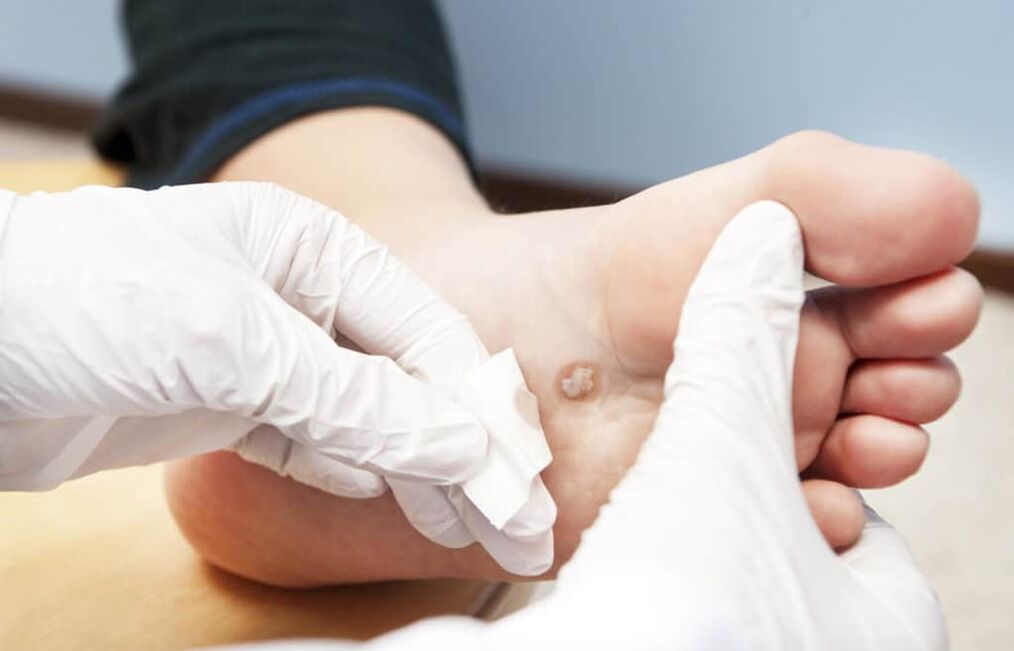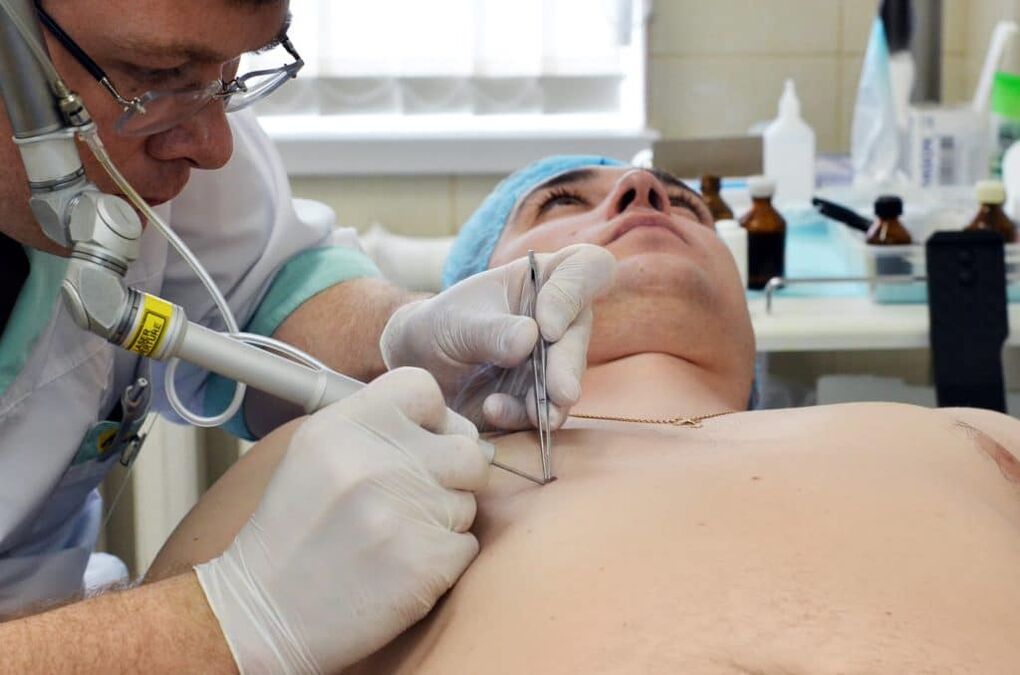Warts are benign skin growths that appear on different parts of the body.They occur in both children and adults, and with their unsightly appearance and unpleasant feelings during injury, they cause a lot of inconvenience to patients.What causes warts and is it possible to prevent their appearance?
Causes of warts

HPV can be "earned" in public bathrooms or saunas, or from manicurists due to poor disinfection of equipment.
The main reason for the appearance of warts lies in infection with the human papillomavirus (HPV), which is transmitted through household contact or sexual contact (the exception is keratomas that occur as a result of age-related changes in the skin).The penetration of pathogens into the body of a healthy person occurs through the skin injured in one way or another, and the provoking factors can be:
- increased activity of the virus in the carrier of the disease;
- a sharp decrease in immunity in a healthy person.
From the moment of infection to the appearance of the first formations, it takes from 14 days to several years - during this time, the virus does not bother the sick person at all.HPV activation is mainly due to:
- changes in the hormonal level due to medication, pregnancy, illness;
- stress;
- deterioration of general health due to illness;
- prolonged exposure to cold;
- overwork.
Why do warts appear on the body?
Warts (papillomas) on the body arise as a result of contact with a person who is a carrier of the human papillomavirus or his belongings.Paths of infection can be different:
- use of the patient's personal belongings - towels, underwear and bedding, combs, dishes, personal hygiene products and so on;
- touching common objects - fences, door handles, elevator buttons;
- visiting swimming pools, saunas and baths (especially without rubber slippers);
- unprotected sexual contact with an infected person;
- clearing crowded places;
- self-infection (the appearance of warts on the body is caused by frequent traumas of the maternal formation).
Why do warts appear on hands?
Warts on the hands, as well as on other parts of the body, are caused by HPV infection.The cause of the appearance of warty growths is physical contact with an infected person or his belongings (for example, infection can occur as a result of handling).In this case, the following types of warts may develop:
- simple (vulgar)- painless growths with a keratinized surface that appear on the hands and fingers (their size increases over time);
- periungual- variants of simple ones that form near the nail;
- apartment (youth)- rounded nodules with a flat surface that appear on the back of the hands and on the inner surface of the limbs below the elbow (usually seen in adolescents, but can also appear in adults).
Why do warts grow on the feet?

The skin of the feet should be taken care of especially carefully, because it is much easier for the virus to enter the body if your feet are prone to sweating.
Warts on the legs are painful growths that can grow.They appear on the heels or front of the feet due to HPV infection.The reasons that lead to the development of the disease are:
- reduced immunity;
- the presence of diseases that lead to deterioration of the blood supply of the lower extremities - varicose veins, diabetes mellitus;
- wearing uncomfortable, tight or low-quality (made of artificial materials) footwear;
- stress;
- increased sweating of the feet;
- sleep disorders;
- lack of vitamins;
- dry skin.
Why do warts appear on fingers?
Warts on the fingers are caused by direct contact with a person infected with HPV or the objects they used.It can be shaking hands, touching handrails in the subway, wearing someone else's slippers, and so on.As a rule, vulgar and plantar warts are transmitted in the described way.
Why do warts appear on the genitals?
The HPV virus, which causes warts in the genital area, perineum and anus (condylomas), is transmitted through unprotected sex.Without proper treatment, the number of genital warts increases due to constant trauma, which in turn causes the formations to become cauliflower-like.
How does a wart start to grow?
When activated in the human body, the human papillomavirus attacks skin cells, which is accompanied by their excessive division and tissue proliferation (at this point, the wart begins to grow).
Attention!Adequate treatment of the pathology in the early stages allows you to return the virus to a "dormant" state and prevent further spread of formations throughout the body.
Are warts dangerous?
Warts are benign formations that cannot seriously harm human health.However, they still need to be treated.This is explained:
- high degree of infectiousness of formations and, accordingly, their rapid spread on the skin;
- the risk of secondary infections due to accidental injury to growths;
- risk of malignancy (transformation into a cancerous tumor);
- risk of infecting others.
Diagnostics

Treatment of warts should be carried out only under the supervision of a dermatologist.
The diagnosis is made by a dermatologist based on clinical manifestations.Additional investigations, including DNA typing, are rarely needed.The main signs of warts are:
- lack of skin pattern on the surface;
- the presence of blackheads (clogged capillaries);
- bleeding from injury.
During the examination, other skin pathologies were excluded.In severe cases, it is possible to perform a biopsy followed by a histological examination of the nipple tissue.
Treatment
Despite the fact that today there are many ways to get rid of warts, none of them eliminate the cause of their appearance - the human papillomavirus.That is why in 30% of cases the disease returns again.
Treatment is needed when warts:
- grow quickly or itch;
- they are often injured;
- the number of formations is increasing rapidly.
Drug therapy
Treatment of warts with drugs is carried out comprehensively.Patients are prescribed:
- agents that have a chemical effect on formations;
- cytotoxic drugs;
- agents that affect the immune system - interferons.
Folk remedies
Treatment of warts with folk remedies is usually used when they have just started to grow or when it is necessary to remove one small formation.In the vast majority of cases, the following recipes are used for this purpose.
- Garlic.Cut a clove of fresh garlic in half and rub the wart with the cut of one of the halves.The treatment is carried out twice a day.
- Garlic patch.A plate is cut from a clove of garlic according to the size of the formation, applied to the growth and fixed with plaster.The manipulation is performed before going to bed.In the morning, remove the garlic.
- Garlic paste.Garlic is grated using a grater.A spoonful of mash is mixed with a similar amount of melted lard and four teaspoons of vinegar.The finished product is placed on a piece of bandage, applied to the surface of the previously evaporated formation, covered with polyethylene, fixed with a plaster and wrapped in something warm.
- Garlic scones.Grate the garlic.Acetic acid and flour are added to the pulp, the dough is kneaded and a flat cake is made.In the evening before going to bed, the cake is applied to the wart, covered with polyethylene and secured with a plaster.
Other methods

There are other, more effective ways to remove warts.This includes:
- cryodestruction;
- electrocoagulation;
- laser coagulation;
- surgical excision.
Cryodestruction is a procedure that involves freezing the warts with liquid nitrogen.The substance is applied to the surface of the formation using a tampon attached to a wooden stick or a special cryoapplicator.Freezing lasts 10-30 seconds, after which the growth turns white and becomes thick.After an hour, a blister appears on the skin, which eventually turns into a crust.
Electrocoagulation is the removal of warts using electric current.The formation is interrupted using a thin loop under a high-frequency current, which helps to avoid bleeding and disinfects the tissue.The procedure is performed under local anesthesia.A crust forms at the site of the wart, which falls off after seven days.If cancer is suspected, the cut tissue is sent for histology.
Electrocoagulation is based on cauterization of pathological tissues with electric current, due to which the skin formations die.
Laser coagulation involves laser cutting of warts.The formation is removed layer by layer under local anesthesia.A small depression remains at the site of the growth, which heals after a few weeks.
Surgical excision of warts is used to remove large or fused warts.Growths are cut out with a scalpel under local anesthesia.After removal, the edges of the wound are sutured with a cosmetic suture, and the biological material is sent for histological examination.A thin scar remains on the nipple.
These manipulations are performed exclusively in a hospital environment.
What to do if the wart grows back after removal?
A relapse of the disease indicates the activation of the human papillomavirus in the body.If the wart reappears, it should be removed, and then measures should be taken to strengthen the immune system.
You can start removing the growth only after visiting a doctor and confirming the benign nature of the wart.Otherwise, removal by conventional methods is fraught with significant health problems.























